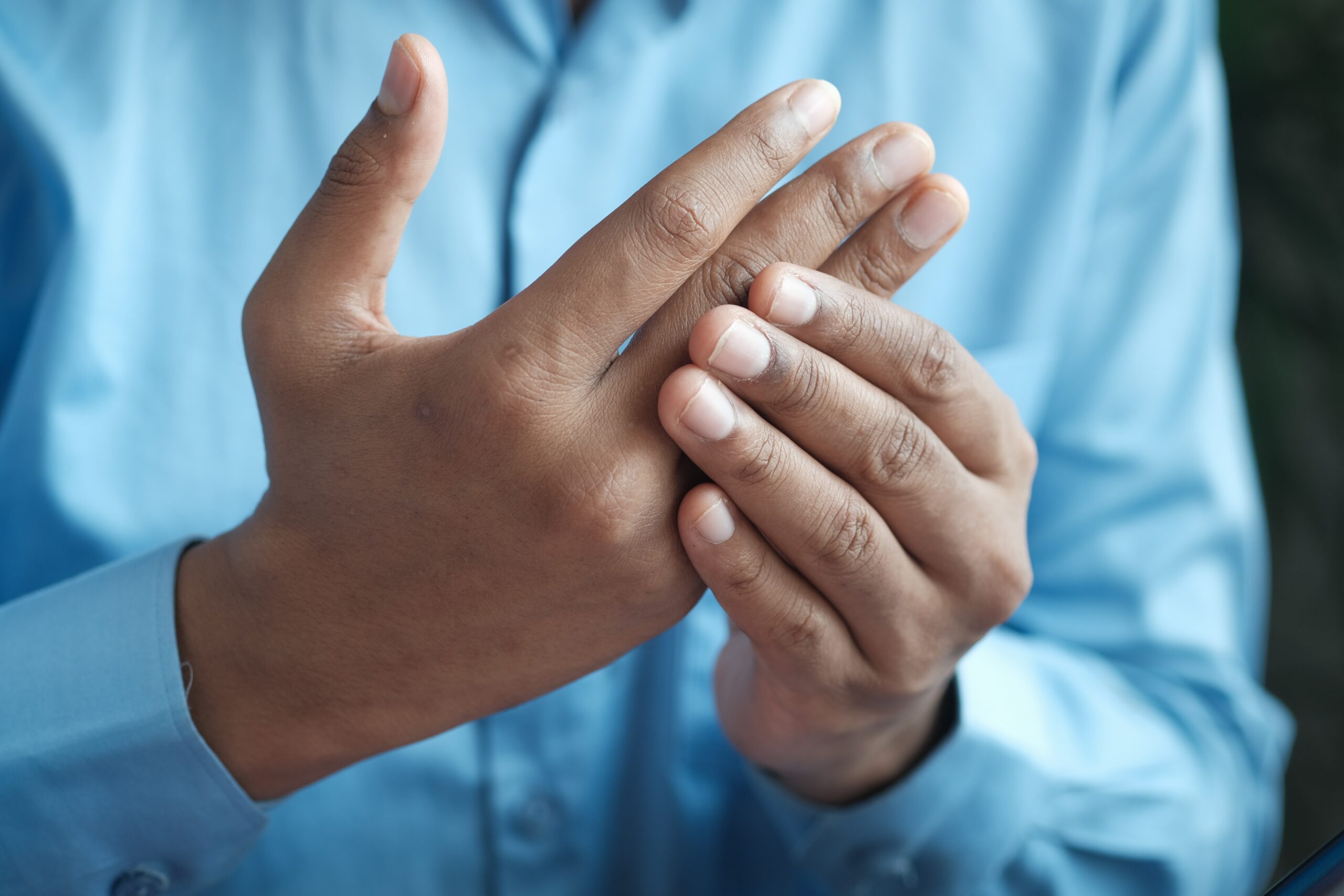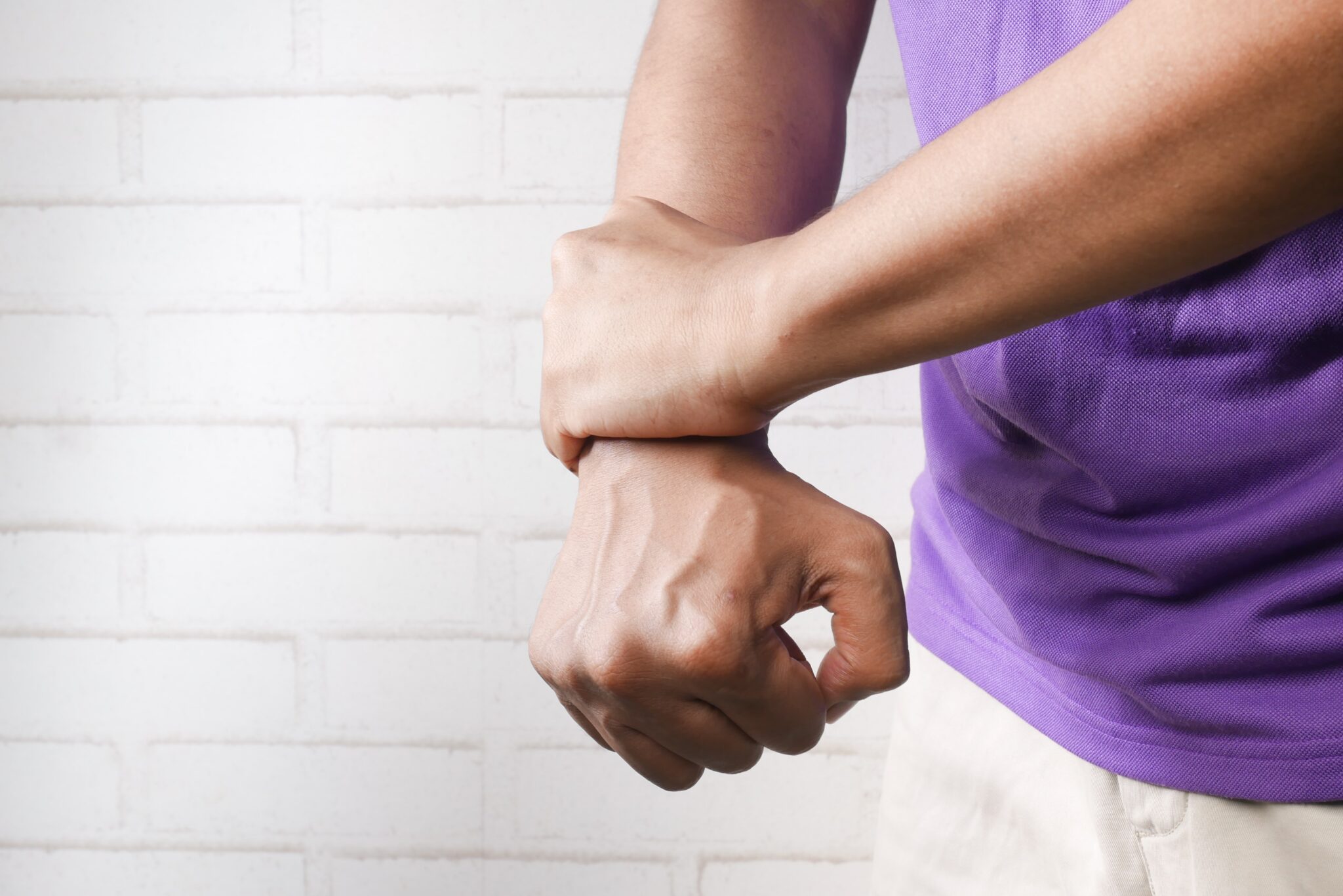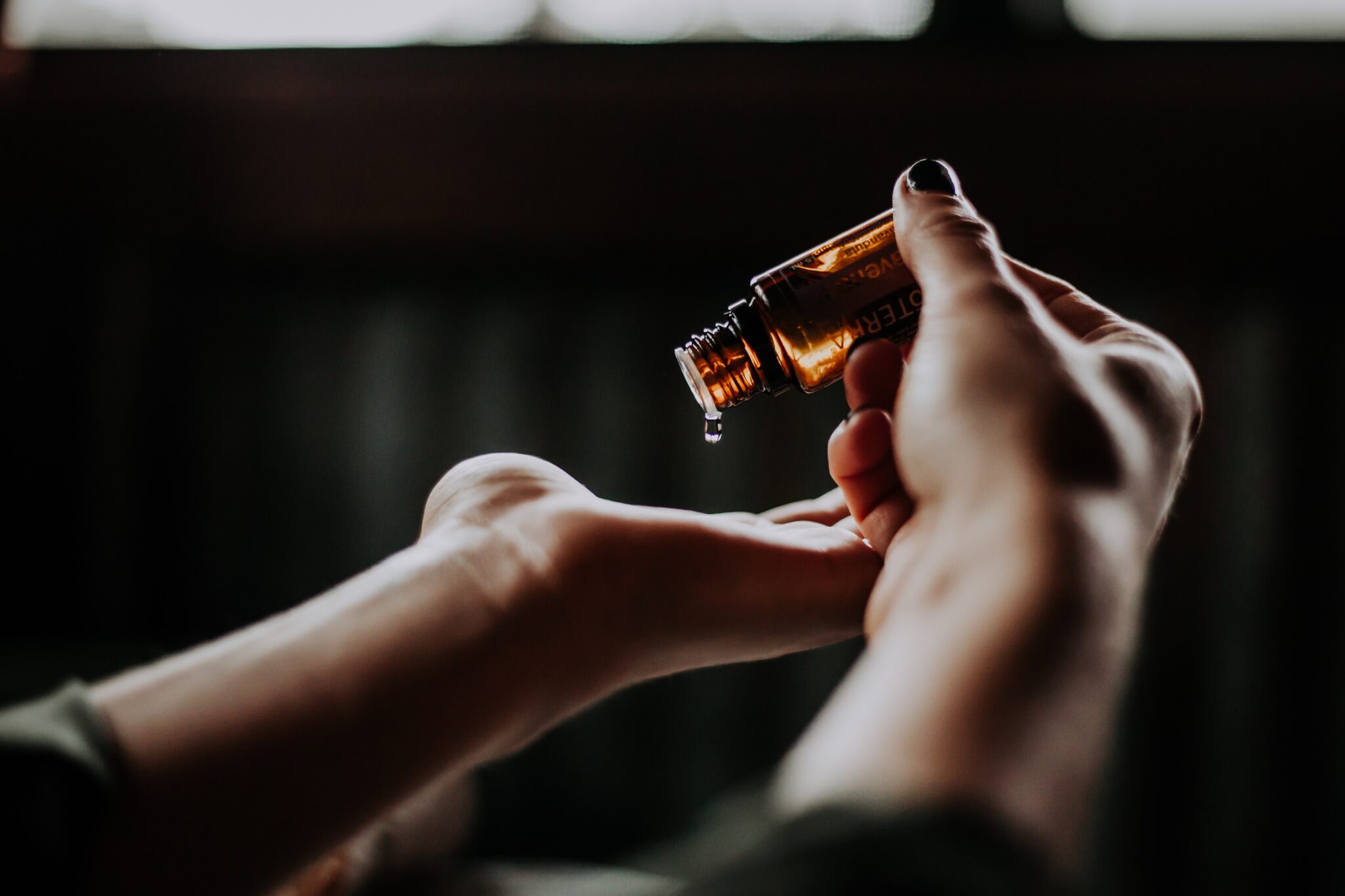
Reviewed by:
Nicole A. McCarthy, MD MSc

Reviewed by:
Nicole A. McCarthy, MD MSc

Living With Rheumatoid Arthritis (RA) – A Tough Journey
By: Narda McCarthy
January 15, 2022
Rheumatoid diseases are known as auto-immune diseases in which the body recognizes its own components as foreign and acts against itself.
Rheumatoid arthritis (RA), one of the many diseases under the umbrella of Rheumatism, is a chronic and complex disease that requires ongoing treatment and, in many cases, brings about a change in a person’s daily dynamics because… living with it, is not easy; yet, leading a productive life can be successfully done.
The complications of rheumatoid arthritis are several and go beyond the pain, discomfort, and lack of ability to continue what used to be normal activities. RA is not only about physical symptoms, but it will also impact a person’s mental health, day-to-day activities and even relationships, lowering considerably the quality of life and in some cases, possibly causing premature death.
Rheumatoid Arthritis, Cont.
Although genetics and environmental elements are believed to be trigger causes in some rheumatic diseases, professionals believe that because there are more women than men affected by them, there could be a hormonal factor linked to them. More specific, to rheumatoid arthritis.
As per the American College of Rheumatology: Rheumatoid Arthritis is the most common form of autoimmune arthritis. It affects more than 1.3 million Americans. About 75% of RA patients are women. In fact, 1 – 3% of women may get rheumatoid arthritis in their lifetime. The disease most often begins between the ages of 30 and 50. However, RA can start at any age.
There have been cases in children as young as two years old affected by RA.
CAUTION: It is important not to confuse RA with osteoarthritis, as indicated in the Harvard Review:
Osteoarthritis occurs when cartilage (tissue in your joints that cushions your bones) wears away. Pain occurs when bone rubs against bone. This type of arthritis pain tends to develop gradually and intermittently over several months or years. Osteoarthritis is the most common type of arthritis affecting 27 million Americans.
Rheumatoid arthritis, on the other hand, is an inflammatory condition in which your immune system attacks the tissues in your joints. It causes pain and stiffness that worsen over several weeks or a few months. And joint pain isn’t always the first sign of rheumatoid arthritis—sometimes it begins with “flu-like” symptoms of fatigue, fever, weakness, and minor joint aches.
RA is a direct immune response of the body to its immune system’s attack to its own healthy cells in many joints: hands, wrists, knees, feet, spine, knees, and jaw. Damage is often symmetrical, affecting both hands or both knees at the same time, tending to affect distal joints first, this means that joints further away from your core, such as feet, ankles, fingers and wrists, are the first to be affected.
On its onset, the outer covering of the joint called synovium gets inflamed. When inflammation becomes chronic, and the synovium thickens due to cell and protein production increase, damage, spreads to the rest of the joint, increasing its swelling and in many cases, changing its shape and structure, causing deformity. The muscles, ligaments, and tendons that surround the affected joint, supporting and stabilizing it, weaken as RA progresses, adding to the pain and damage.
If left untreated, the harm will be permanent, resulting in long-lasting pain, with periods in which it gets worse (flares) triggered by stress, excessive activity, increased humidity, or when the patient stops taking medications abruptly; and, periods in which all seems better (remission).
According to Dr. Matthew Ezerioha in the Rheumatoid Arthritis Support Network, twenty-five per cent of RA patients develop rheumatoid nodules; these are firm lumps that vary in size and form under the skin and can appear in the elbows, forearms, knees, or back of heels; they do vary in size and shape and could be as small as a pea or as large as a walnut.
In severe cases, nodules may form in the eyes, lungs, and vocal cords. They could also appear as clusters of tiny nodules (micro-nodules), mostly around the finger joints.
Dr. Ezerioha tells us that although nodules are not tender, they could be painful during flares and could move. He also indicates that “although nodules are generally not dangerous or debilitating, there are treatment options available if it becomes necessary to have them reduced or removed.”
Infrequently and mostly in severe cases, RA could cause inflammation of the blood vessels, the lining of the lungs and the pericardium (double-walled sac containing the heart).
Symptoms:
Besides the localized pain in one or more joints when resting or moving, RA may cause:
- Loss of energy
- Tiredness
- Fatigue
- Chronic fatigue
- Weakness
- Depression
- Dry mouth
- Dry eyes
- Stiffness that could last more than thirty minutes when waking up or after a long rest
- Reduced mobility
- Reduced range of motion
- Lack of balance
- Occasional low fevers
- Warm joints and muscles
- Redness in affected joints
- Tenderness in joints and muscles
- Swelling in more than one joint in both sides of the body
- Inflammation
- Tenderness
- Loss of appetite
- Weight loss
- A general feeling of discomfort
NOTE: RA should be diagnosed by a rheumatologist. This is important because the signs and symptoms could be easily confused with other forms of rheumatism or joint inflammatory diseases.
Your rheumatologist will diagnose RA by:
- Reviewing your symptoms
- Conducting a physical examination
- X-rays
- Lab tests
NOTE: It is highly recommended that you visit your physician as soon as the symptoms develop, if possible, within six months of their onset. Begin treatment early to slow or stop RA’s progression. Early diagnosis and effective treatments will help reduce its damaging effects.
RA is a complex, chronic illness that is a life-changing event, therefore, it is very important that in addition to discussing your physical symptoms, you share any worry, depression or isolation feelings with your doctor.
Risk Factors for the many types of rheumatism:
- Smoking. This will increase probabilities of developing heart disease and diabetes.
- Obesity. This will increase the risk of high blood pressure and high cholesterol. Many obese patients do not benefit from their medical treatment to the same extent as those patients who are not obese.
- Poor diet
- Lack of regular exercise
- Genetics. People born with HLA (human leukocyte antigen) class II genotypes, could experience heightened RA symptoms
- Occupations with repetitive motions
- Sports injuries
- Age – most adults show signs in their sixties
- Sex – more often in women than in men
- Live births – women that had not given birth are at increased risk
- Secondhand smoke – individuals whose mother smoked when they were children
On a good note, it is interesting to note that it has been found that women who breastfeed their babies, have less risk of developing RA.
Treatments include:
- Disease-modifying antirheumatic drugs, DMARDs for short. These medications slow the disease, reduce inflammation, and prevent joint deformity. DMARDs can be conventional synthetic, biologic or targeted synthetic.
- Biologic response modifiers or BRMs, also known as immunomodulators. These medications focus on the disease-causing activity. However, serious infections could occur, making screening before initiation of treatment and careful monitoring are of paramount importance.
- Self-management strategies. Please continue to read for Extra Tips on this page.
- Natural remedies. Please look for our section What to Do in this page.
NEVER: Stop taking your medications suddenly. If the side effects are too difficult or you do not feel comfortable taking them, please consult with your physician before making any abrupt decisions.
PLEASE REMEMBER: That if you are taking medicine for this condition, as with any other, before you decide to implement natural remedies it is important to consult with your rheumatologist as some medicaments interact with natural medicine. Do not stop taking your medicaments without consulting with your rheumatologist.
WHAT TO DO:
- Exercise. Regular moderate exercise has been found to be beneficial to maintain good range of motion and mobility.
- A healthy diet. Recommended for good weight management. Obesity has been shown to worsen overall health, and, in particular, rheumatic diseases. Consult with your physician on the best nutritional plan for you.
- Turmeric: A main component of the delicious curry, is a well-known and fantastic anti-inflammatory. Add it to your smoothies, to your soups, to your rice or take it as a supplement. It is so good for so many conditions that even your kidneys and heart might benefit.
- Pineapple: Also, a well-know, great anti-inflammatory with analgesic properties. Add pineapple to your diet, great in fiber, contains high enzymes with bromelain and vitamin C which are important to heal the body and assuage the pain. Make a smoothie, juice or succus. Chop it in small pieces and eat it raw, with salt and powdered hot pepper or alone, always delicious. Look in our blog “The Secrets of Pineapple” for more delicious ways to include this wonder in your diet.
- Papaya: A good source of potassium and great anti-inflammatory. Add it to your diet with moderation. It could cause diarrhea if eaten in excess.
- Potassium: Include in your diet great amounts of foods rich in potassium: Raw spinach, seaweed, papaya, avocados, acorn squash, sweet potatoes, bananas, broccoli, kidney beans, dried fruits, yogurt, tomatoes, coconut water, potatoes, corn, and carrots.
- Vitamin C: Add it to your diet, either as a supplement or by adding to your diet fruits and vegetables rich in this vitamin. Try using the juice of limes instead of vinegar. Substitute salad dressing with olive oil and lime juice.
- Cherries, blueberries and blackberries, strawberries, raspberries: Put the anti-inflammatory properties of the anthocyanins found in them to work for you.
Certainly, boredom will never be part of your diet!
- Lifestyle changes. Quitting smoking and stopping heavy alcohol use reduce inflammatory symptoms and improve your overall health.
- Consider a Native American Sweat. Long used for many maladies, this is one of Native American’s great resources. If not sweat lodge available, close your bathroom door and let the shower run as hot as it is set for, and sit nearby to allow the moist and warmth to loosen your muscles. Do this for 15 to 20 minutes. Taken from the Healing Secrets of the Native Americans by Porter Shimmer.
WHAT TO DO, CONT.:
- Birch leaf tea: Use 4 to 5 dry or fresh leaves to a mug, add boiling water and let it steep for 5 to 10 minutes. Drink 3 times a day. Taken from Backyard Medicine by Julie Bruton-Seal and Matthew Seal.
- Birch leaf oil: Grab a handful of leaves and put them in glass jar that is big enough to hold them and the oil. Add extra virgin olive oil until it covers the leaves and add one more inch of oil. Cover with muslin (gauze) and secure with a rubber band. Put it in an indoor sunny spot of your home and leave it there for a month stirring frequently with a wooden spoon to make sure the leaves are always covered by the oil. After the month has passed, using a large sieve, move it to another jar and let it sit for a while; this will allow any water from the leaves (if any) to go to the bottom of the jar; once the oil has settled, transfer to smaller, dark glass jars, making sure that no water is transferred to them. Store it in a dark corner. Use this oil to massage the areas that hurt. It can also help those areas suffering from eczema or psoriasis. Taken from Backyard Medicine by Julie Bruton-Seal and Matthew Seal.
- Burdock leaf poultice: Steam a large leaf until it is soft and then apply to the affected area. Put a hot water bottle over it to keep it warm and leave it on for approximately thirty minutes. Taken from Backyard Medicine by Julie Bruton-Seal and Matthew Seal.
- Warm baths: Water between 88 to 95 degrees Fahrenheit. Taken at night, before going to bed. When finished, wrap up in a large towel, making sure you are not exposed to the cold air after the bath. Please note that the temperature of the water is slightly below the body’s temperature. Found in The Herbal Medicine Makers Handbook by James Green.
- Arnica: Only apply on the skin as a cream, ointment, liniment, salve, tincture, compress or poultice. No oral intake is recommended because of its serious side effects.
- Gels, creams, or patches containing capsaicin are recommended if you do not have sensitive skin. Do not use them at the same time as a hot compress, it might burn your skin.
- Cold compress to reduce swelling and inflammation: Apply to the affected joint during flare-ups. Leave it on for 10 to 15 minutes and rest for 30 minutes, then apply again. Repeat the process if needed.
- Hot compress: To stimulate blood flow to the affected area, it has the added benefit of relaxing the muscles surrounding it. A moist heating pad; warm, damp towels; microwave hot packs. Just be very careful not to burn your skin. A hot shower or hot tub might help as well
NOTE: Do not use hot tubs or spas if you have high blood pressure, heart disease, or are pregnant.
Extra tips
- Exercise: Whether you feel like moving or not, this is good for you. It might reduce the swelling in your joints, easing the pain. Ask your doctor or a physical therapist for the exercise program recommended for you. An RA exercise program could include walking, swimming, pushups, pullups, planks, lunges and squats. Resistance tubing, free weights such as barbells, dumbbells, even soup cans are a good option. Weight machines, cable suspension training (used by trainers, athletes, and the military), range of motion exercise and balance moves.
- Consider tai chi: This millenary, calm martial art is soft and easy on your joints helping you build strength, flexibility, and balance.
- Consider yoga: The perfect combination of breathing and low impact exercises that sometimes include meditation. It is believed to alleviate inflammation and stress.
- Consider acupuncture. One of the oldest natural pain remedies. Ask for recommendations for a well-know, well-reputed practitioner.
- Progressive muscle relaxation: Tighten and relax the muscles in a specific area while practicing deep breathing. Start with your feet and slowly work your way up to your face and head.
- Deep breathing, also called Yoga breathing. A calming technique when anxiety assaults us. A discreet way to calm down even if we are at work, riding the bus, driving our car, or surrounded by unknow people.
- Keep your back straight while sitting or standing
- With your mouth closed, and your tongue softly touching your lower, front gum, inhale through your nose while counting to four
- Hold your breath while counting to seven
- Exhale through your mouth while counting to eight, this can be done while making and audible sound or in silence, depending on your surroundings
- If you are in a comfortable setting and can sit down with your hips slightly elevated above your knees might help you relax a little faster. You can sit on the floor with your back against the wall for added support.
- Meditation: Start with deep breathing, imagine a beautiful place, and allow your mind to wander away.
- Visualization: Start with deep breathing, imagine a beautiful place, and see yourself free of pain and doing something like gardening, hiking, walking at the beach, laying down on the sand. This will certainly reduce your stress and might alleviate your pain.
Share your results with us on Instagram



Photography by: Christin Humme, Deckler PH, Ivars Krutainis, and Towfiqu Barbhuiya @ Unsplash
